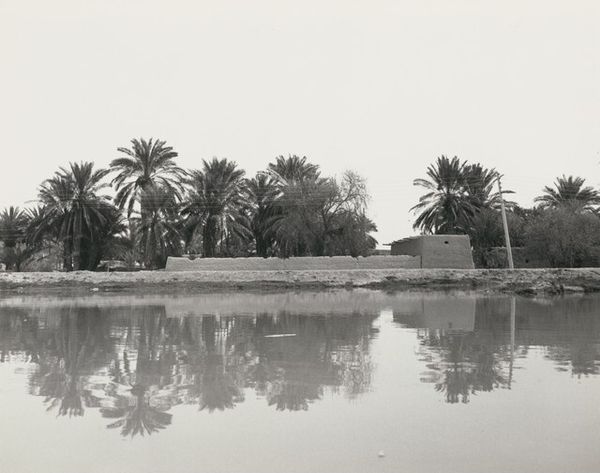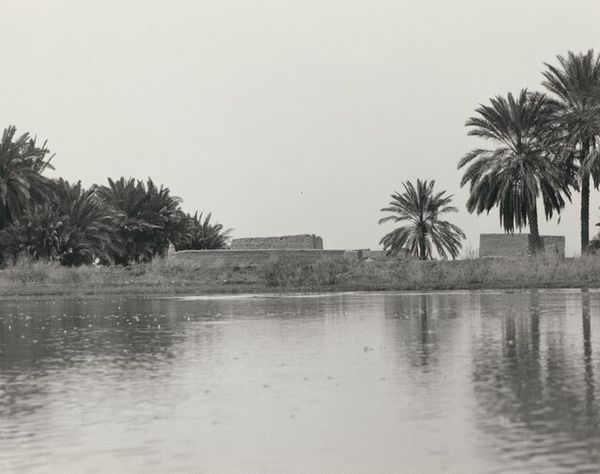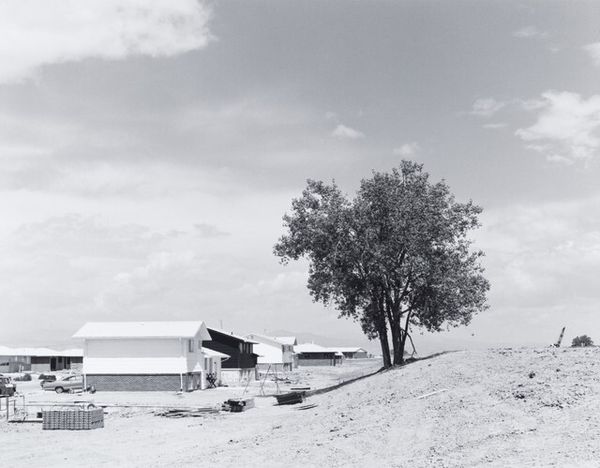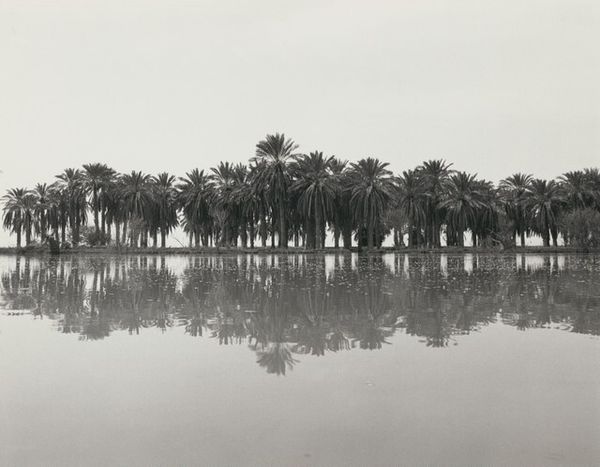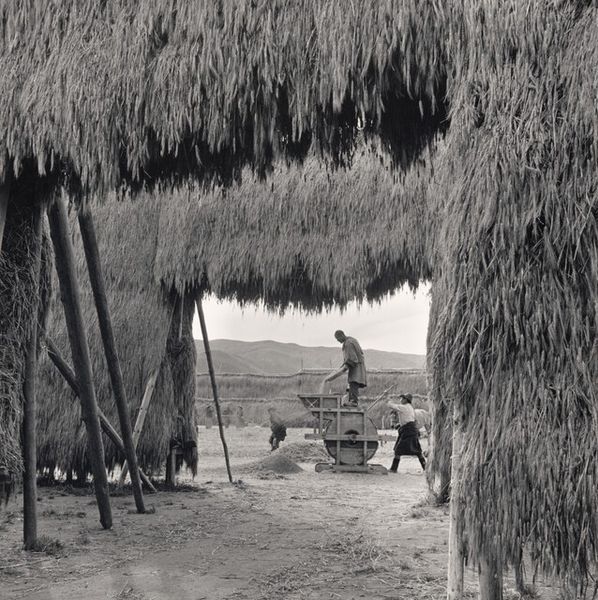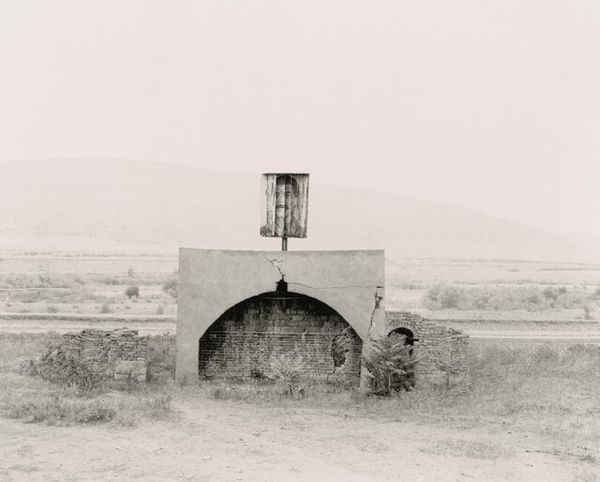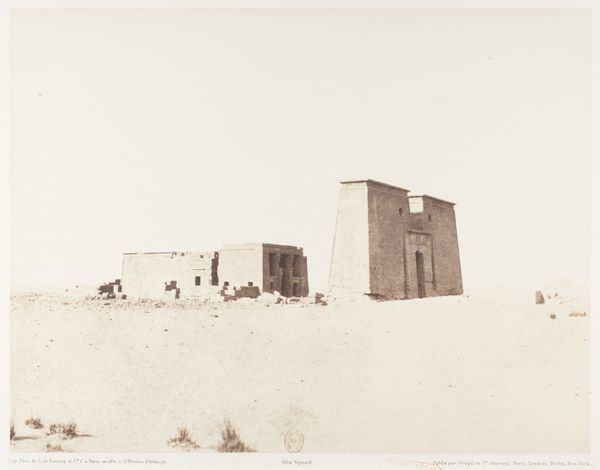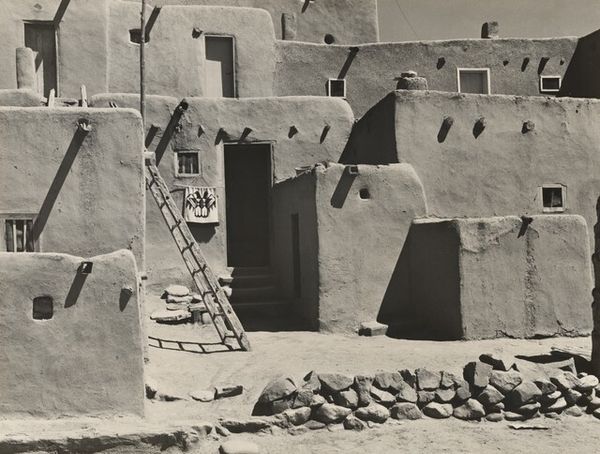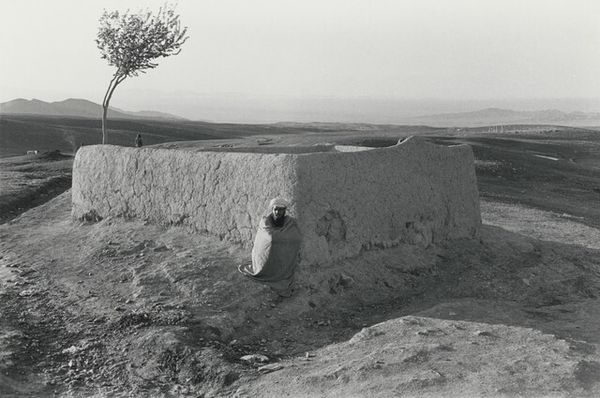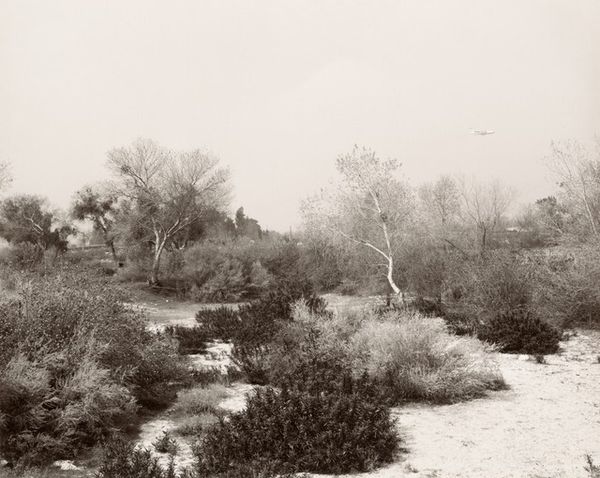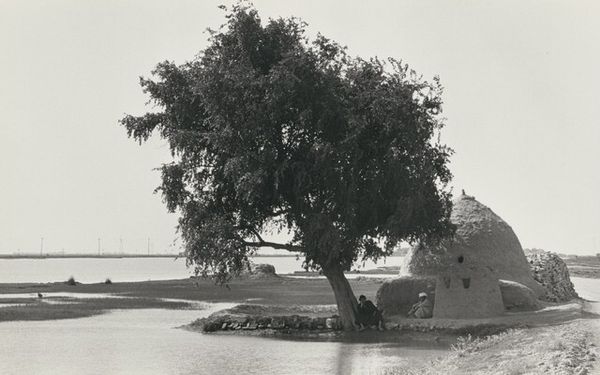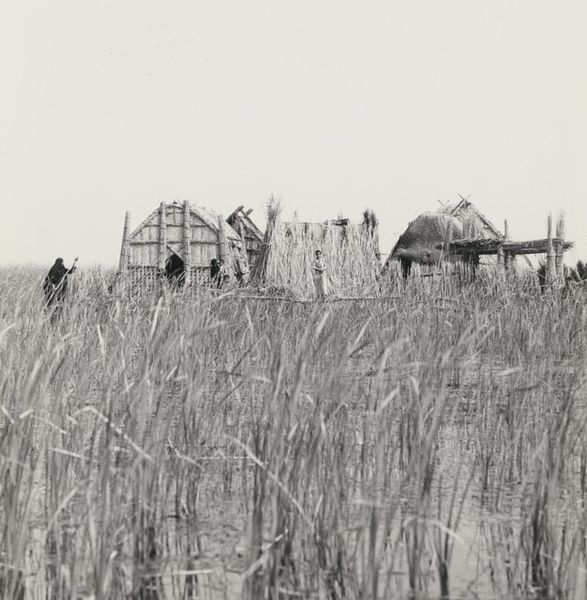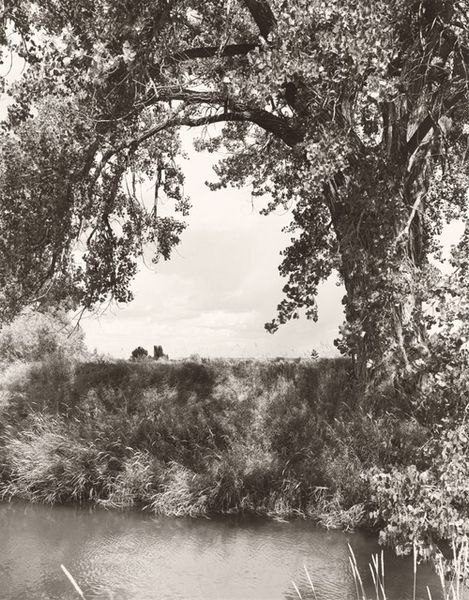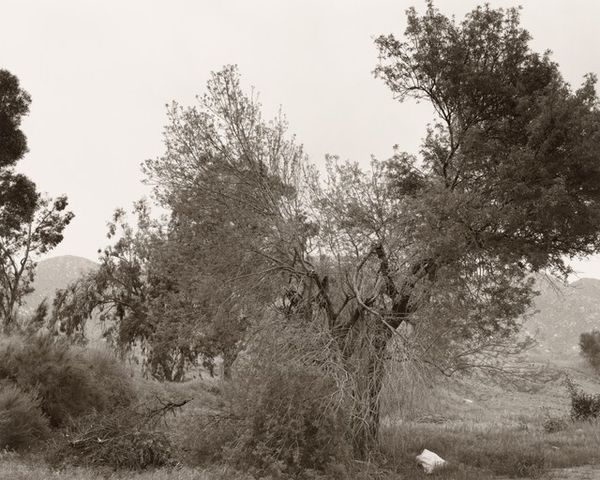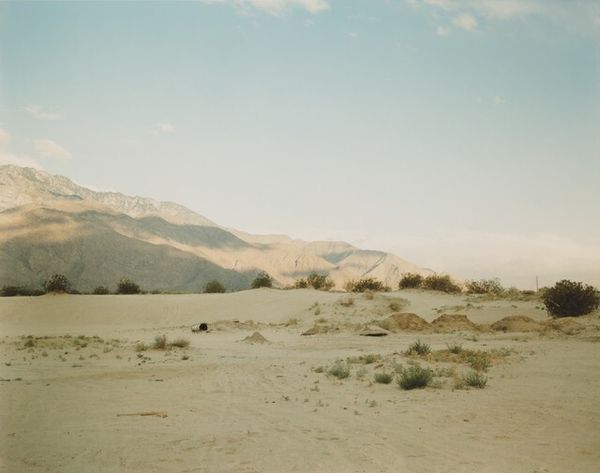
The North Gate of Baghdad, the scene of fierce fighting. Possibly 2003 - 2004
0:00
0:00
c-print, photography
#
contemporary
#
drone photography
#
landscape
#
c-print
#
urban cityscape
#
photography
#
landscape photography
#
cityscape
Dimensions: sheet/image: 101.6 × 127 cm (40 × 50 in.)
Copyright: National Gallery of Art: CC0 1.0
Editor: This is Simon Norfolk’s, "The North Gate of Baghdad, the scene of fierce fighting," likely taken around 2003 or 2004. It's a C-print photograph, and I'm struck by the contrast between the ruin of the gate and the seemingly peaceful landscape. What are your first impressions from a formalist perspective? Curator: Notice how Norfolk composes the image: The gate, damaged but standing, acts as a vertical anchor. The strong diagonal created by the trees draws our eye through the landscape. The sky, while turbulent, uses light to fill much of the area, counteracting the tension presented in the architecture. How does that compositional tension make you feel? Editor: I hadn't thought of it that way! It's like a push and pull – the damaged building and military tank on the left suggesting destruction, but then there's the movement in the sky and the bright, untouched landscape around it... Do you think the textures within the structure draw us in closer? Curator: Absolutely. The intricate patterning that still exists on the right part of the North Gate emphasizes the textural contrast when you compare it with the war-damaged areas and debris around it. This sharp dichotomy invites close visual inspection and generates intellectual curiosity as to its context. It compels the viewer to decode how those relationships convey meaning. Editor: That's a really interesting observation. It makes me consider the intent behind the photo and its overall message more deeply. This really changes my understanding. Curator: Precisely. By analyzing the formal elements – composition, texture, light, subject - we begin to approach some understanding of its structure and how those components function in concert. Through that understanding we, perhaps, glimpse Norfolk's intent to juxtapose what remains standing and what has been destroyed, forcing an appreciation of the inherent contrasts.
Comments
No comments
Be the first to comment and join the conversation on the ultimate creative platform.
